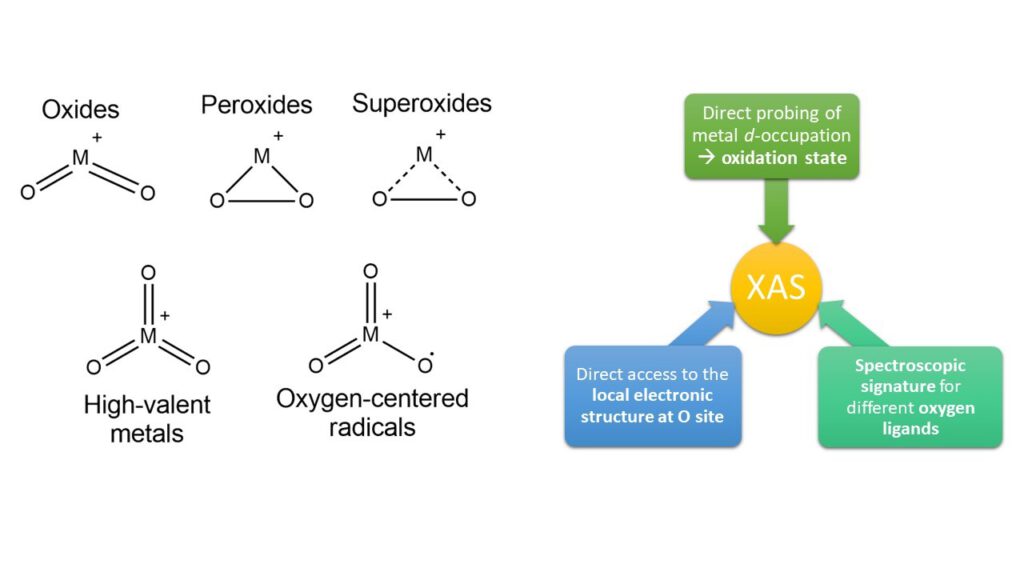
Helmholtz Zentrum Berlin & University of Freiburg
Institute of Physics
Experimental Cluster Physics and Synchroton Radiation Spectroscopy
mayara.da_silva_santos(at)helmholtz-berlin.de
Direct spectroscopic identification of reactive metal-oxygen species
Finding compounds that present transition metals with unusual oxidation states or reactive oxygen species (superoxido, peroxido and oxygen centered radical) is of great scientific and technological interests, as they have key applications as oxidizing agents, catalysts, or reaction intermediates. [1,2]
Here, we use X-ray absorption spectroscopy (XAS) at the oxygen K and metal L3, M3 or N3 edges of [MOn]+ systems (M = transition metal, n = integer) to identify the spectroscopic signatures of oxygen ligands and assign the oxidation state of the metal.[3,4] The [MOn]+ species in the gas phase are produced by argon sputtering of a metal target in the presence of oxygen. The cationic species are mass selected and accumulated in an ion trap. X-ray absorption spectra are then recorded in partial ion yield mode.[5] Our ion trap instrument is installed at the undulator beamline UE52-PGM at the Berlin synchrotron radiation facility BESSY II.
Reactive species, such as the schematically showed below, are analysed in stable conditions in the ground state inside the cryogenic ion trap. This method is here demonstrated to be an important tool to identify oxygen ligands, offering direct access to element specific electronic structures.

References:
[1] Y. X. Zhao, et al., Phys. Chem. Chem. Phys. 13, 1925–1938 (2011).
[2] S. Riedel and M. Kaupp, Coord. Chem. Rev. 253, 606–624 (2009).
[3] M. da S. Santos, et al., Angew. Chem. Int. Ed., e202207688 (2022).
[4] M. G. Delcey, et al., Phys. Chem. Chem. Phys. 24, 3598–3610 (2022).
[5] K. Hirsch, et al., J. Phys. B: At., Mol. Opt. Phys. 42, 154029 (2009).



